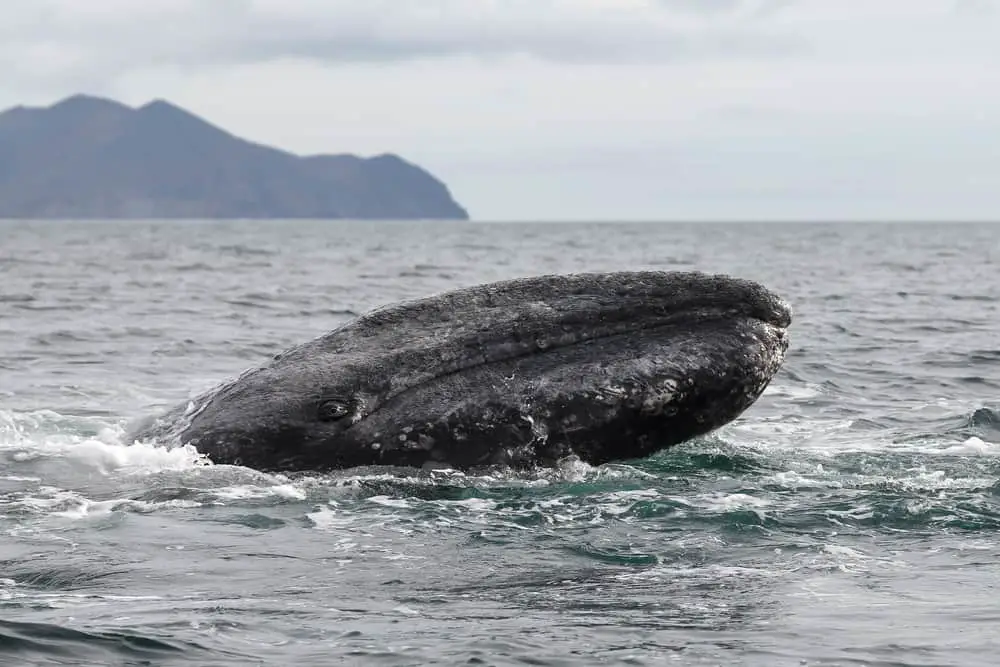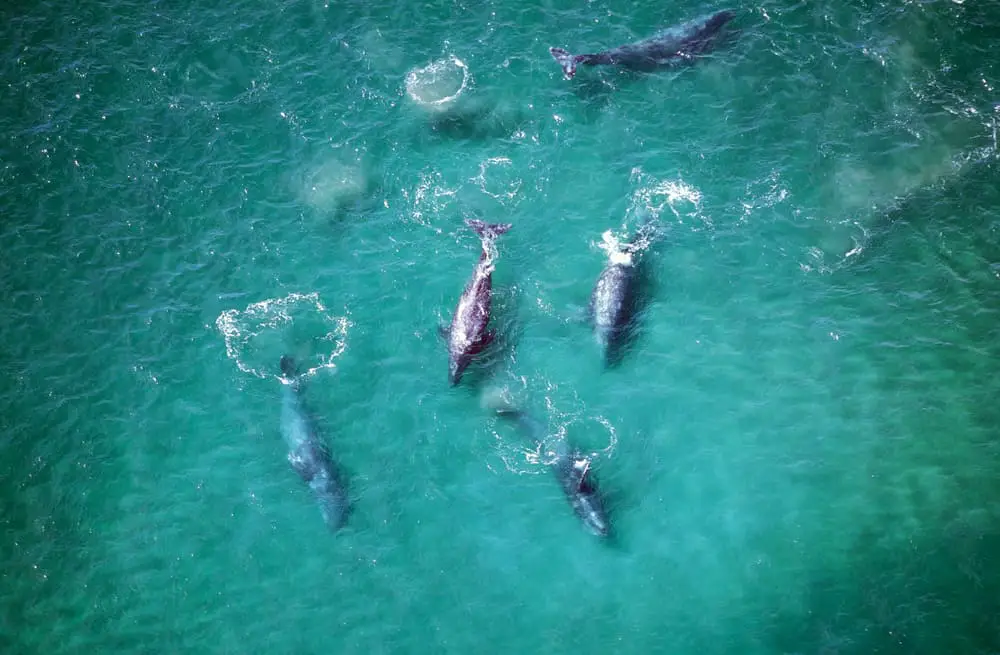Eschrichtiidae is a family of marine mammals that includes gray whales (Eschrichtius robustus) and their extinct relatives. These large, charismatic animals are known for their long migrations along the Pacific coast of North America, where they feed on benthic organisms in shallow waters. Despite being heavily hunted by humans in the past, gray whales have rebounded to healthy populations through conservation efforts.
The history of eschrichtiid evolution and biogeography has been an active area of research for many years. Scientists use molecular phylogenetics and morphological analyses to reconstruct the evolutionary relationships among Eschrichtiidae species and their closest living relatives. By understanding how these whales diversified over time and dispersed geographically, researchers gain insights into the ecological factors that shaped their evolution and distribution across different regions of the world’s oceans.
In this article, we review recent advances in our understanding of eschrichtiid systematics, with emphasis on new findings from genetic data sets and comparative anatomical studies.

Genus
Genus Eschrichtius – Gray whale
What Is Eschrichtiidae?
Eschrichtiidae is a family of marine mammals commonly known as gray whales. They are characterized by their mottled gray color, narrow head, and short dorsal fin.
Gray whales have an interesting evolutionary history that spans back to the Miocene epoch about 20 million years ago. The earliest members of the Eschrichtiidae family were small in size, but over time they evolved into larger species capable of long-distance migrations.
Despite being one of the most iconic marine mammal species worldwide, gray whales face significant threats due to human activities such as commercial whaling, habitat degradation, and climate change. As a result, conservation efforts for these animals have been implemented globally with varying degrees of success.
These initiatives include monitoring populations through aerial surveys, enforcing regulations on hunting and shipping traffic, and conducting research to better understand the ecological needs of gray whales. Nonetheless, greater effort is needed to ensure the survival of this remarkable species in the future.
Gray Whales: Characteristics And Behavior
As previously discussed, Eschrichtiidae is a family of baleen whales that includes the gray whale.
Gray whales are known for their lengthy migration patterns and unique feeding habits.
These mammals travel up to 12,000 miles round trip each year from their summer feeding grounds in the Arctic to their winter breeding and calving lagoons along Mexico’s Baja California Peninsula.
Gray whales have distinctive behavior when it comes to feeding.
They feed primarily on bottom-dwelling organisms such as amphipods, mysids, and polychaetes using a specialized method called ‘skimming’.
This involves swimming close to the ocean floor with their mouths open while filtering out sediment and water through their baleen plates.
Their diet is highly dependent on seasonal availability and location, which can vary greatly depending on factors such as water temperature and depth.
The unique migration patterns and feeding habits of gray whales make them an important species for study in marine biology research.
As researchers continue to study eschrichtiidae species like the gray whale, they gain valuable insight into how these animals survive in changing environmental conditions.
Understanding whale migration patterns and feeding habits contributes not only to scientific knowledge but also has practical applications for conservation efforts aimed at protecting endangered species populations around the world.
Eschrichtiid Evolution And Biogeography
The evolutionary history of Eschrichtiidae is a fascinating subject that has intrigued researchers for decades. The family’s remarkable adaptability to different environments and the unique characteristics displayed by its members have captured the imagination of scientists worldwide.
There are several key factors that have driven the evolution of these animals, including their geographic distribution, environmental pressures, and genetic variability.
- Geographic Distribution: Eschrichtiid whales can be found in various locations around the world, from cold arctic waters to warmer tropical seas. This diversity in habitat has played an essential role in their evolution as it necessitated adaptations specific to each environment.
- Environmental Pressures: Eschrichtiids face numerous challenges related to climate change, pollution, hunting pressure, and food availability. These factors put selective pressure on these species’ populations, leading them to evolve new traits that help them survive and thrive despite these threats.
- Genetic Variability: Variation within eschrichtiid genomes provides raw material for natural selection to act upon, ultimately shaping the course of their evolutionary trajectory over time.
Understanding how these drivers impact eschrichtiid evolution is crucial for conservation efforts aimed at preserving these magnificent creatures for future generations. By identifying critical areas where these animals live and understanding what makes them unique, we can better protect them from harm caused by human activities such as oil spills or commercial fishing practices.
Ultimately our goal should be not only to learn more about these amazing mammals but also to ensure they continue thriving in nature long after we’re gone.
Molecular Phylogenetics And Morphological Analyses
Genetic diversity of Eschrichtiidae has been examined through molecular phylogenetics in recent years. This approach utilizes DNA sequences to study evolutionary relationships among species, populations or individuals. Several studies have inferred the phylogeny of gray whales using mitochondrial DNA (mtDNA) sequence data from different geographic locations.
These analyses revealed that Baja California is a significant breeding area for eastern Pacific gray whales and indicated that there are two genetically distinct groups: one group inhabiting northeastern Asia waters and another occupying the eastern North Pacific.
Comparative anatomy is an essential tool for understanding morphological evolution within a specific taxonomic group such as Eschrichtiidae. It helps researchers to identify homologous structures across different taxa and infer ancestral states based on shared characteristics.
Detailed anatomical descriptions of all species within this family can provide important insights into their adaptations to particular ecological niches throughout their evolutionary history. Such studies may contribute significantly towards improving our knowledge about these enigmatic marine mammals, which could ultimately help with conservation efforts aimed at protecting them against extinction due to various anthropogenic pressures they face today.

Insights Into Ecological Factors
Eschrichtiidae, commonly known as gray whales, have a unique ecological niche in the marine ecosystem. They are primarily filter feeders, consuming small crustaceans and other planktonic organisms found in shallow coastal waters. Gray whales also play an important role in transporting nutrients from deep ocean waters to shallower areas through their fecal plumes. This nutrient enrichment can stimulate primary productivity in these ecosystems and support larger food webs.
Habitat preferences of gray whales vary depending on their life stage. During breeding season, they tend to inhabit warmer waters near coastlines where mating and calving occur. In contrast, during feeding season, gray whales migrate towards colder water regions with high productivity for optimal feeding opportunities.
The availability of suitable habitats is critical for the survival of this species as it allows them to meet their physiological needs such as reproduction and nutrition. Understanding gray whale’s habitat preferences is essential for effective conservation management strategies that ensure adequate protection of their vital habitats while balancing human activities like shipping and oil exploration which can cause disturbance or degradation to these ecosystems.
Therefore, further research on the ecology of gray whales should focus on improving our understanding of how environmental variables affect their distribution patterns and behavior across different seasons and locations. Such insights could help develop better management plans that promote sustainable use practices within their range while maintaining healthy populations over time.
Recent Advances In Eschrichtiid Systematics
Recent research on the systematics of Eschrichtiidae has revealed several advancements in our understanding of these marine mammals.
One such area is morphological evolution, which plays a crucial role in the classification and identification of different species within this family.
Researchers have examined various anatomical features such as skull morphology, external measurements, and osteology to better understand the evolutionary relationships between different eschrichtiid taxa.
These studies have shed light on the differences in morphology between gray whales and other baleen whale species, highlighting unique adaptations that are specific to this group.
Another key area of research in eschrichtiid systematics is genetic differentiation.
By analyzing DNA sequences from multiple individuals across different populations and regions, researchers can determine how closely related these organisms are to one another.
Recent studies have shown that there is significant genetic diversity within gray whale populations, with distinct subpopulations existing along the Pacific coast of North America and Asia.
Additionally, advances in molecular techniques have allowed researchers to revisit older taxonomic classifications based solely on morphological data, providing new insights into evolutionary relationships at both the species and genus level.
Overall, recent advances in both morphological evolution and genetic differentiation have greatly enhanced our understanding of Eschrichtiidae systematics.
Further research using state-of-the-art tools will undoubtedly continue to reveal new information about these fascinating marine mammals for years to come.
Conclusion
Eschrichtiidae is a family of baleen whales that includes the gray whale (Eschrichtius robustus), one of the most well-known and studied species in this group.
Gray whales are characterized by their mottled gray coloration, rounded head with no dorsal fin, and long migrations between feeding and breeding grounds.
They are also known for their unique feeding behavior, which involves bottom-feeding on benthic organisms using suction.
Recent research has shed light on the evolutionary history and biogeography of Eschrichtiidae, as well as their ecological relationships with other marine organisms.
Molecular phylogenetics studies have revealed important insights into the genetic relationships among different eschrichtiid species, while morphological analyses have contributed to our understanding of their physical characteristics and adaptations.
These findings have helped researchers to better understand how these animals have evolved over time and adapted to changing environmental conditions.
Furthermore, recent advances in eschrichtiid systematics have provided new perspectives on how these whales fit into the broader picture of cetacean evolution.
Studies examining the fossil record of Eschrichtiidae have suggested that these animals may have originated earlier than previously thought, potentially shedding light on their early evolution and diversification.
Taken together, these findings underscore the importance of continued research efforts aimed at unraveling the complex biology and ecology of Eschrichtiidae and other marine mammals.
In conclusion, Eschrichtiidae represents an intriguing group of baleen whales that continues to capture the interest of scientists around the world.
Through molecular genetics, morphological analysis, paleontological investigation, behavioral observations, and more interdisciplinary approaches it remains possible to uncover novel information about this fascinating family’s past and present day existence; allowing us deeper insight into their intricate ecosystem interactions within Earth’s oceans.

